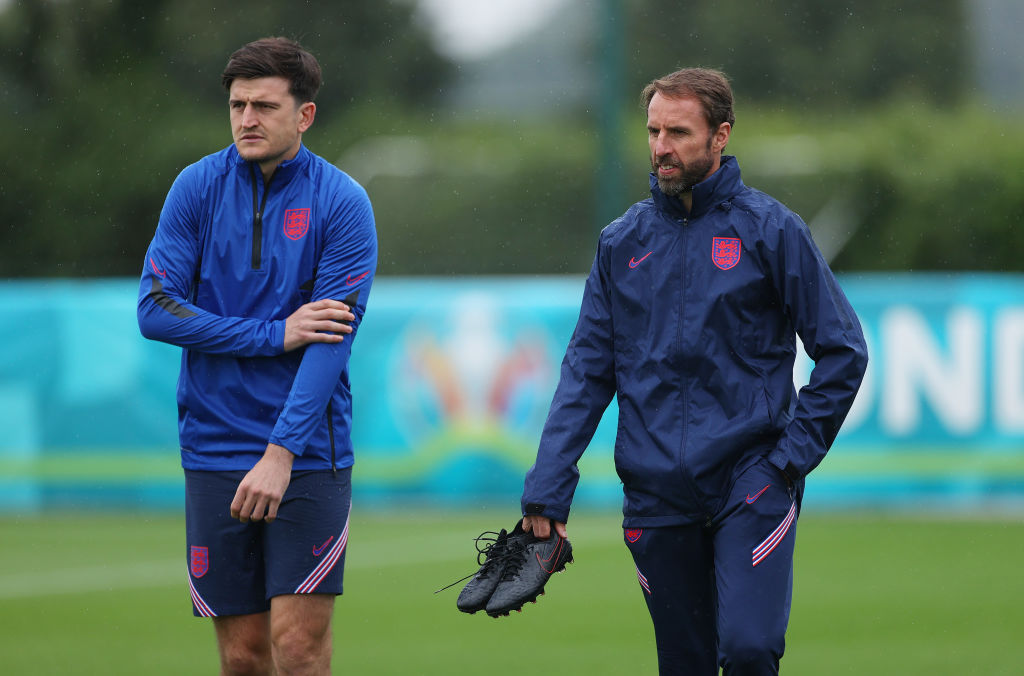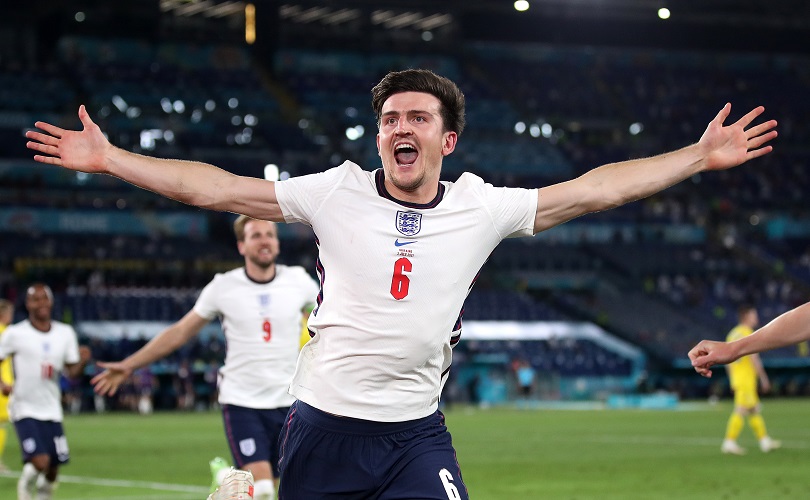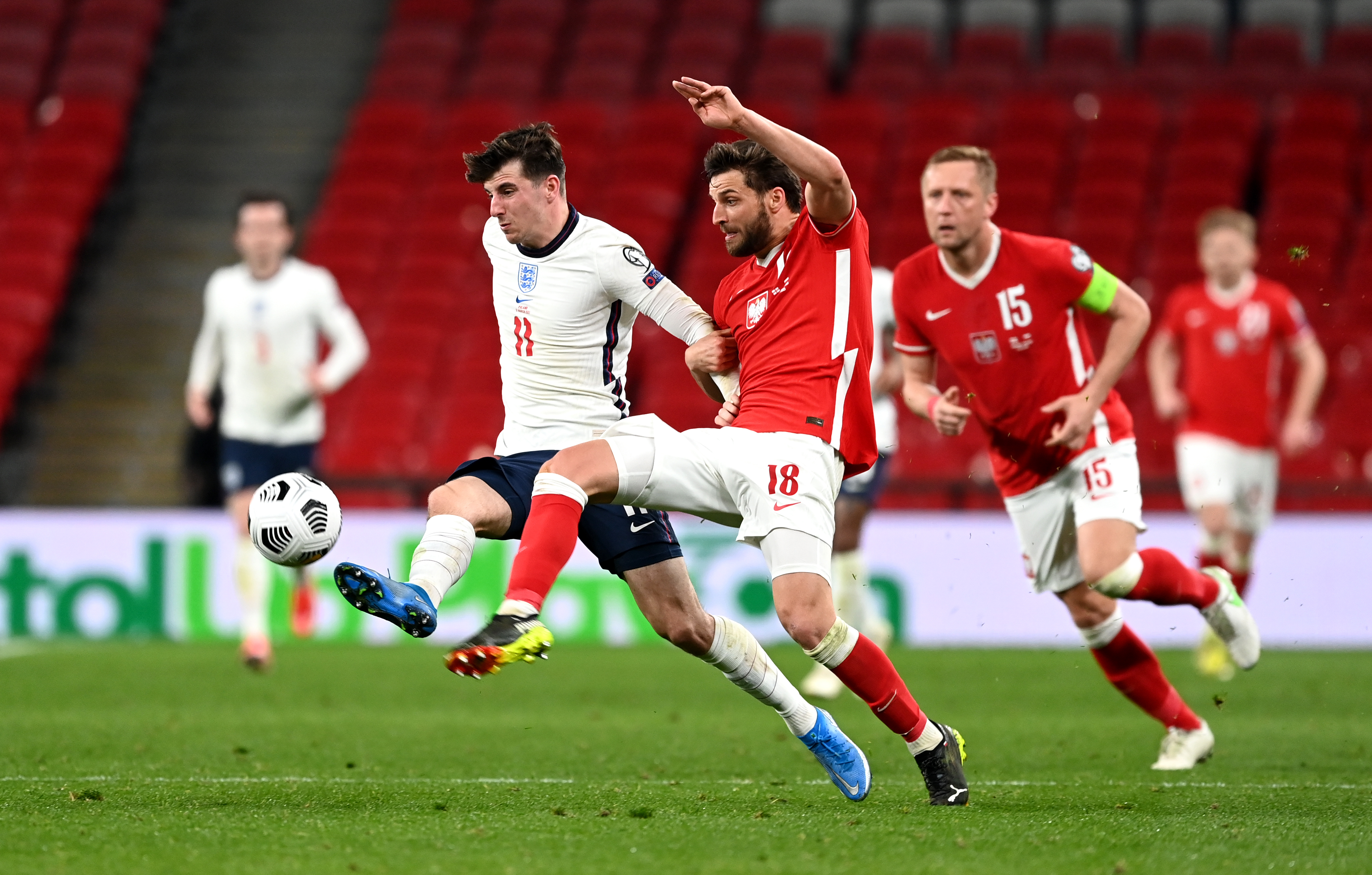England: Should Gareth Southgate play a back three or back four?
England play two different formations – so what's the difference?

England played four-four-effing-two in the seminal Mike Bassett: England Manager. It was expected back then: a little outdated, perhaps, but the very bedrock of our national game. It even inspired the titles of certain magazines.
But things have changed. Gareth Southgate opts not for the classic two banks of four anymore but for one of two formations depending on the scenario. There are those that say his football is too defensive. But is it?
Let's look at the pros and cons of both shapes.
England in a 3-4-3

England played a back three at the 2018 World Cup for the first time in over two decades. The back three was brought back into vogue at club level by Antonio Conte – who won the Premier League in 2016/17 with a 3-4-3 at Chelsea: the first time that the competition had been won with the formation. With a lack of genuine top centre-backs, Southgate plumped for the shape.
The Three Lions managed to make it all the way to the semi-finals with a compact shape, guarded by a defence of Kyle Walker, John Stones and Harry Maguire. The odd throuple thrived together: and have been used together ever since as the first-choice trio should the game require them: see Germany and Italy games at the Euros.
The pros of a back three: More defensive stability, for a start. With Walker alongside the more natural centre-backs, there's recovery pace from the Manchester City man, in case the backline are caught off guard, while Maguire can make his marauding runs from the back.

The three-man backline squeeze together well too with the wing-backs dropping back, meaning that their defensive block is wider and less prone to be caught out from crossing. There's less danger of opponents switching play quickly and catching Maguire napping, for example. Oh, and England always have an extra man in build-up when playing a 3-4-3, which is useful when aggressively pressed – so it's not just a defensive tool, either.
Get FourFourTwo Newsletter
The best features, fun and footballing quizzes, straight to your inbox every week.
The cons of a back three: With so many good offensive players, does it seem a bit of a waste to play three centre-backs?
England lacked creativity in 2018 and that's something that has been levelled at them every time they've utilised this defensive shape since with Kieran Trippier often tasked with being a primary offensive threat from right wing-back. Not only that, the speed on international football is slower: England's build-up can be laborious when they have an overload in their own half – and instead of moving the ball quickly through the likes of Rice and Phillips, they can be sluggish and lack vertical progression.
A back three can be an offensive tool but for England, it's used to get bodies covering at the back. Could Southgate play a more modern iteration of a 4-3-3 that uses Declan Rice screening and dropping into the backline to help? Perhaps…
England in a 4-3-3

The 4-3-3/4-2-3-1 is the formation that England most often use in qualification. The Three Lions tend to have Harry Kane up top, with Mason Mount as the hybrid no.8/no.10, moving into pockets to create when his side are in possession, dropping back when off the ball.
This is the formation that most top sides across the world play with, with France, Germany and Spain – the last three World Cup winners – all using a back four. As do Liverpool, Manchester City and the majority of club sides that England stars play for. Now that England have better centre-backs, they too can play back fours with a little more confidence.
The pros of a back four: With strong centre-backs and a good midfield ahead, four defenders should be all you need. A 4-3-3 shape enables England to pass in triangles, get world-class midfielders into the side and control possession.

The 4-3-3 is what the majority of England's defence are used to – and anyway, a well-coached 4-3-3 should be proactive where a 3-4-3 can be reactive. Deep blocks are dying out (at club level, anyway) and there's more case for being a strong, well-pressing unit in a more positive formation than simply sitting back with more defenders. What if England had attacked Italy with a 4-3-3 rather than playing off them last summer?
The cons of a back four: Sure, the benefits of a well-coached 4-3-3 are obvious in the teachings of Klopp and Guardiola. But this is international football: it's not as well-coached, since Southgate doesn't get as much time with his players. And neither do other coaches: simply packing out the backline has proven to be a decent subsitute to a Liverpool-like shifting shape with someone like Henderson covering – and if it ain't broke, don't fix it.
There isn't an obvious 'pivote' no.6, as Guardiola would call it either, with Rice being the closest but not actually playing that role for West Ham. The 4-3-3 doesn't get England as wide as the 3-4-3 can with wing-backs, either, safe in the knowledge there's cover centrally. The 4-3-3 can bring incredible benefits if it's mastered… but it's difficult to master.
For a limited time, you can get five copies of FourFourTwo for just £5! The offer ends on May 2, 2022.
Restock your kit bag with the best deals for footballers on Amazon right now
ALSO READ
POGBA Midfielder reveals he has suffered depression several times
MUFC Wayne Rooney's 10 greatest career moments
GAFFER Erik Ten Hag in talks to become next Man United manager

Mark White has been at on FourFourTwo since joining in January 2020, first as a staff writer before becoming content editor in 2023. An encyclopedia of football shirts and boots knowledge – both past and present – Mark has also represented FFT at both FA Cup and League Cup finals (though didn't receive a winners' medal on either occasion) and has written pieces for the mag ranging on subjects from Bobby Robson's season at Barcelona to Robinho's career. He has written cover features for the mag on Mikel Arteta and Martin Odegaard, and is assisted by his cat, Rosie, who has interned for the brand since lockdown.
